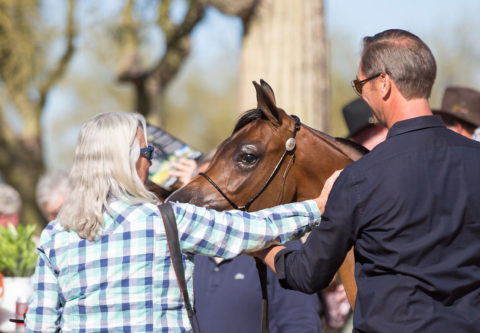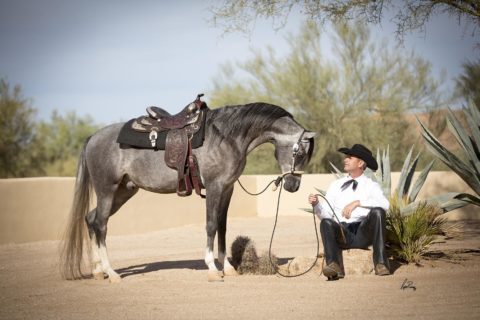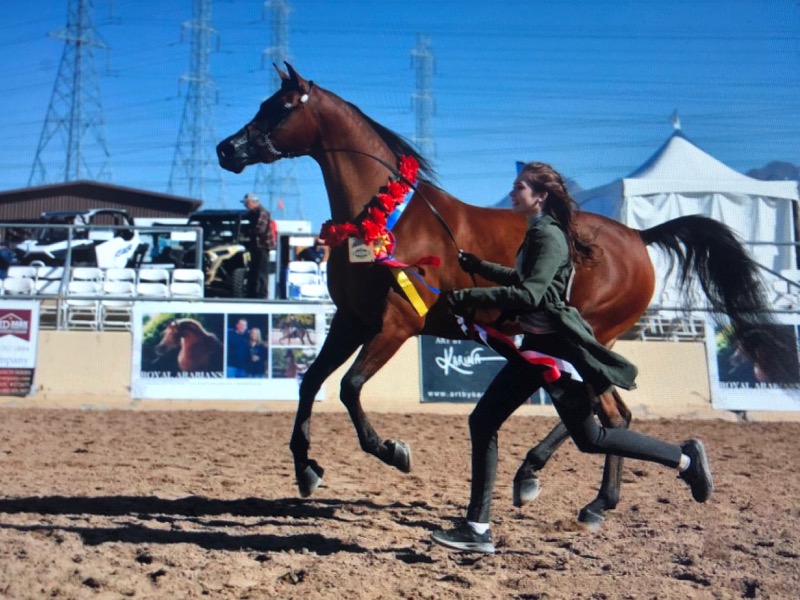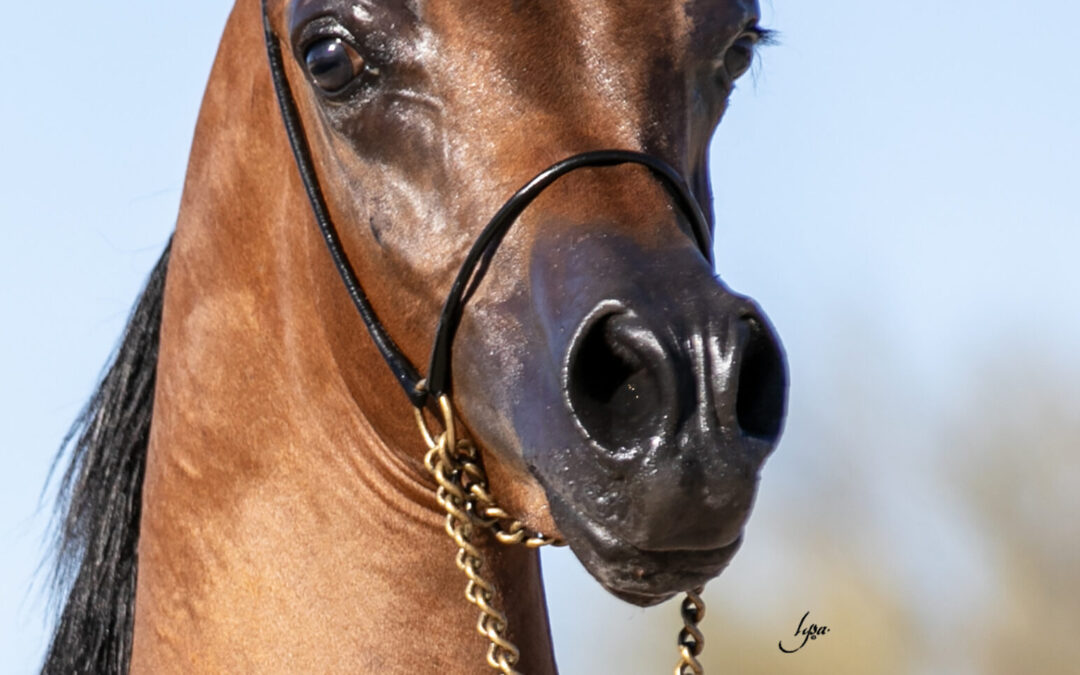These sleek desert horses have become big business in the American Southwest
By Bill Williams, January 2018 (an edition was picked up by BlastingNews.com)
Arabians have conquered Scottsdale, AZ with love and affection – not the warring Bedouin tribes from the Arabian Peninsula thousands of years ago, but rather the 1,000-pound, four-hoof Arabians. They yearn to be stroked and scratched, and the signature neck – missing one vertebra – loves to have a human arm around it. If you blow in their nostrils they will follow you anywhere.

“Arabian horses create a bond with their owners and caretakers that is unlike any other breed,” Gary McDonald told me after touring his Arabian farm in Scottsdale. “They are the most intelligent of the breeds and the intelligence makes them interactive, playful and easy to be trained.”
In 1954, Ed Tweed and 20 other breeders formed the Arabian Horse Association of Arizona, with Ed as its first president, but America’s interest in the horses goes further back in history than that. General U.S. Grant went to Turkey to get stallions from the Sultan. A partner acquired mares and it was off on the breeding race. The 1893 World’s Fair in Chicago featured an Arabian exhibit that kick started the Arabian Registry of America.
There are more Arabian horses registered in North America than any other region of the world, and the epicenter of horse breeding is in the “West’s most Western town” – Scottsdale. The horse association exhibited Arabians in the arena of the Arizona Biltmore Hotel in 1954 in Phoenix – an area of town that lured royalty such as Philip and Helen Wrigley, of the chewing gum family.
“McCormick Ranch, Gainey Ranch, Chauncey Ranch, and the Wrigleys, are common names in the Scottsdale Area, and most new residents do not recognize that these are tightly associated with the history of the Arabian horse,” said Gary McDonald, who – along with his wife Jennifer – owns McDonald Arabians of Scottsdale. “This town, possibly would not have existed, as it is today, without these roots.”
McCormick was a profitable inventor and his wife was an heir to the Rockefeller fortune. Daniel Gainey moved to Scottsdale from Minnesota after becoming the mogul of class ring making. Tom Chauncey was a Phoenix jeweler, turned broadcaster, turned rancher. Tweed’s first Arabian Ranch is now Scottsdale County Club, but has been flourishing in Show Low, AZ for decades.
“Due to the nice weather year round, Arizona has been known to horsemen as a perfect place to train horses 365 days a year,” Mikayla Boge, of the Arabian Horse Association (AHA) told me. It’s big business. The Colorado-based AHA is the official Arabian horse breed association and registry for the U.S. and Canada, with more than 26,000 members and more than one million registered horses.

The 63rd Annual Scottsdale Arabian Horse Show will be held February 15–24th and should draw tens of thousands of horse lovers to see 2,400 horses. Hundreds of Arabian horse lovers and owners flocked to the annual December horse farm tours as a preview. Ten Scottsdale area farms held open houses, and drew Arabian lovers from all over such as Peter and Trina Kurzhals from Southern California’s Steller Arabians farm, Ruel Gober from Dreamco Arabians of Louisiana, and modest one-horse families who can only afford a few acres.
A multi-champion winner, who has sired other champions, can be worth $1 million, and is likely never for sale. You can buy a mare’s embryo for about $15,000 if you have a surrogate female ready to go, and for a little more you can have some great stallion sperm. A breeding partnership can be had for a little over $30,000 for those who want to hedge their bets that a champion is on its way from a stallion-mare combo.
The United States is averaging about 3,500 new registrations each year, and exporting about 600 per year. “We have the highest exportation rate of any region,” said McDonald. There were 102 purebred Arabians and 28 half-Arabian horses foaled in 2017 in the state of Arizona, according to Boge.
Arabians have black skin and black eyes. The lore of the all-black haired stallion is just that, folklore. An all-black haired Arabian is extremely rare. You can get a handsome, loving, riding colt for about $3,000. They are prized for their versatility, brains and athleticism. The Arabian has been called the family horse. Whether you need a safe, quiet horse for the kids to ride or an athletic mount for chasing cattle, the Arabian horse will do just fine.
They are also known for their sweet personality, in-bred by their ancient Bedouin owners who let them sleep in tents with them, according to Boge.
Breeders always compare, so it is common to hear “not quite as fast as a thoroughbred,” or “stronger and more endurance than other breeds,” or “not as fast, but can go much longer distances.”
“Thinner skinned and larger ribcage and lungs than other breeds make them great for endurance because of the air intake, and quicker cooling down periods,” said McDonald.
“The Arabian horse is definitely known for their endurance, and this is one of the reasons they were used for traveling great distances and to fight wars,” Boge added. “In endurance competitions, such as The Tevis, a 100-mile endurance race held yearly near Lake Tahoe, most of the top finishers are Arabian horses.”

And these horses know they are special. “Some of them gain confidence from their handlers and learn that they are special,” said McDonald. “But the truly special ones, know it already and carry a large sense of pride that comes from within, and the desire to announce their presence, and eagerness to perform.”
“The horses definitely feed off of the crowd at shows and off their handlers. Whenever they win, they seem to prance around the ring with the attitude of a champion,” added Boge.
The Scottsdale horse farms are already making plans for next December’s tours.









